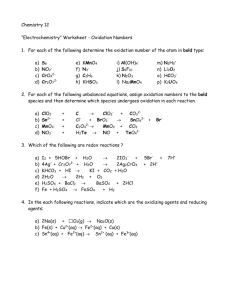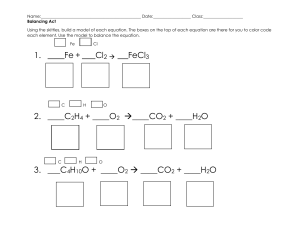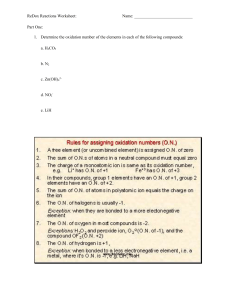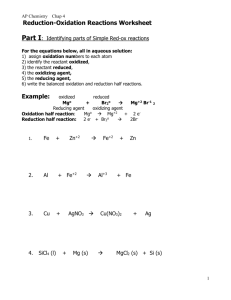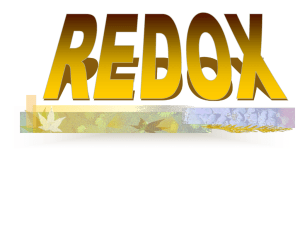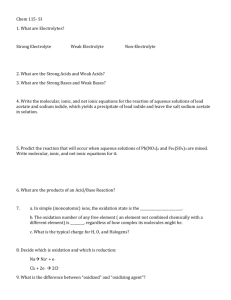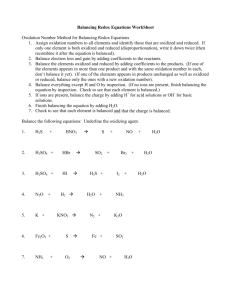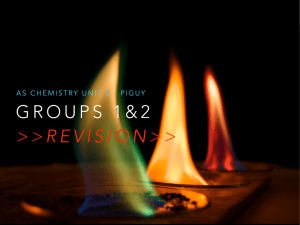Redox
advertisement
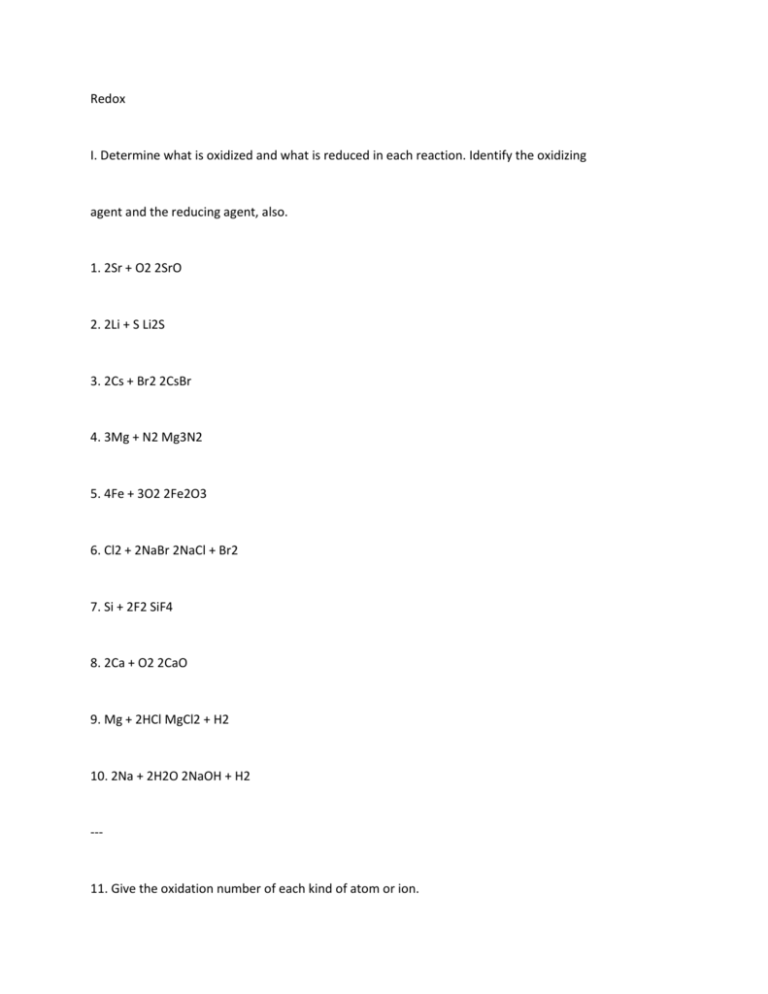
Redox I. Determine what is oxidized and what is reduced in each reaction. Identify the oxidizing agent and the reducing agent, also. 1. 2Sr + O2 2SrO 2. 2Li + S Li2S 3. 2Cs + Br2 2CsBr 4. 3Mg + N2 Mg3N2 5. 4Fe + 3O2 2Fe2O3 6. Cl2 + 2NaBr 2NaCl + Br2 7. Si + 2F2 SiF4 8. 2Ca + O2 2CaO 9. Mg + 2HCl MgCl2 + H2 10. 2Na + 2H2O 2NaOH + H2 --- 11. Give the oxidation number of each kind of atom or ion. a. sulfate b. Sn c. S2- d. Fe3+ e. Sn4+ f. nitrate g. ammonium 12. Calculate the oxidation number of chromium in each of the following. a. Cr2O3 b. Na2Cr2O7 c. CrSO4 d. chromate e. dichromate 13. Use the changes in oxidation numbers to determine which elements are oxidized and which are reduced in these reactions. (Note: it is not necessary to use balanced equations) a. C + H2SO4 CO2 + SO2 + H2O b. HNO3 + HI NO + I2 + H2O c. KMnO4 + HCl MnCl2 + Cl2 + H2O + KCl d. Sb + HNO3 Sb2O3 + NO + H2O 14. For each reaction in problem 13, identify the oxidizing agent and reducing agent.
